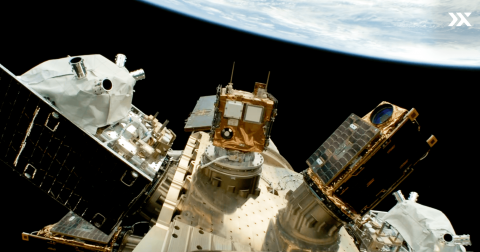Pixxel Expands Firefly Constellation to Six Satellites with Latest SpaceX Launch

Pixxel has launched three additional Firefly satellites aboard SpaceX’s NAOS Mission on Falcon 9, increasing its operational hyperspectral imaging constellation to six satellites. The new deployment follows the company’s earlier launch of three Fireflies in January 2025.
Each Firefly satellite is equipped to capture more than 135 spectral bands at a 5-metre resolution across a 40-kilometre swath. According to Pixxel, the expanded constellation allows for continuous hyperspectral imaging coverage and is intended to support applications such as monitoring vegetation stress, detecting sources of water contamination, and mapping mineral resources.
Awais Ahmed, Founder and CEO of Pixxel, said: “Our earlier launches showed what was possible; this one shows what’s next. Expanding to six Fireflies will transform hyperspectral imaging from isolated snapshots into a continuous planetary memory. With six Fireflies in orbit, the planet itself becomes a living laboratory. What was once invisible is now measurable, and what is measurable can finally be changed.”
The company stated that the expansion sets the stage for its next phase, the Honeybee satellites, which will include extended short-wave infrared (SWIR) bands to cover broader spectral ranges and enable faster revisit times. These satellites are expected to complement the Fireflies and contribute to climate analytics, resource management, and environmental monitoring.
Kshitij Khandelwal, Founder and CTO of Pixxel, said: “This expansion of our fleet of Fireflies proves that we can successfully build, deploy, operate, and scale up the world’s highest resolution hyperspectral satellite constellation to reach more customers at a higher revisit. While there are multiple other satellites in the works, the upcoming Honeybees are special because they will take us further into the electro-magnetic spectrum, enhancing hyperspectral capabilities and increasing the number of use cases we can target.”
Pixxel noted that its first three Fireflies have been operational for over eight months and that the company’s Aurora Earth Observation platform integrates hyperspectral data into user workflows. With the expanded fleet, Pixxel plans to combine satellite data with AI-powered analytics to support predictive applications in industry and government.
Pixxel is a space technology company headquartered in Bengaluru, India, with operations in the United States. It develops hyperspectral imaging satellites and data platforms designed for Earth observation and analytics.
Related news :
CLASSIFIEDS
Reach out to the Aerospace and Defence Industries/Professionals
